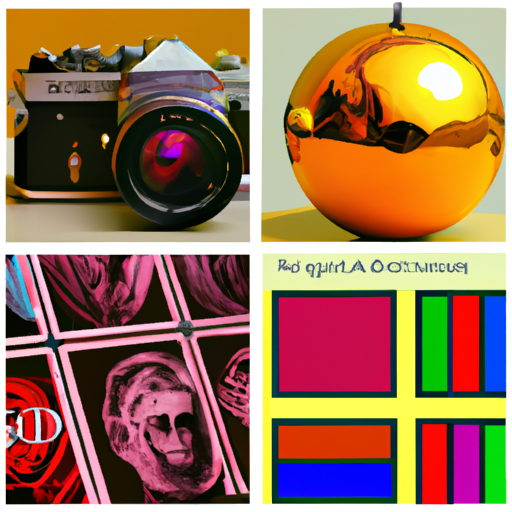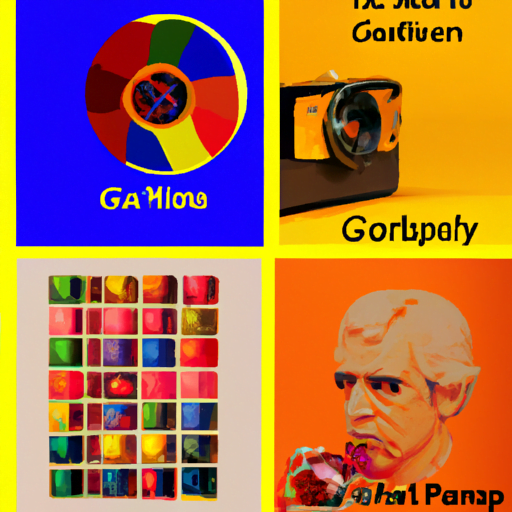
-
Table of Contents
- Cultural Symbolism in Design: Global Perspectives
- The Importance of Cultural Symbolism in Design
- Examples of Cultural Symbolism in Design
- 1. Japanese Design
- 2. Indian Design
- 3. African Design
- The Impact of Cultural Symbolism in Design
- 1. Emotional Connection
- 2. Cultural Identity
- 3. Cross-Cultural Understanding
- Case Studies: Cultural Symbolism in Design
- 1. Coca-Cola’s “Share a Coke” Campaign
- 2. Airbnb’s “A Symbol of Welcome” Campaign
- Conclusion
Cultural Symbolism in Design: Global Perspectives

Design is a powerful tool that can communicate ideas, values, and emotions. It is influenced by various factors, including cultural symbolism. Cultural symbolism in design refers to the use of symbols, motifs, and visual elements that hold significance within a particular culture or society. These symbols can convey deep meanings and evoke strong emotions, making them an essential aspect of design. In this article, we will explore the global perspectives of cultural symbolism in design, examining how different cultures incorporate symbolism into their designs and the impact it has on the audience.
The Importance of Cultural Symbolism in Design
Cultural symbolism plays a crucial role in design as it helps create a connection between the designer, the design, and the audience. By incorporating symbols that are meaningful within a specific culture, designers can tap into the collective consciousness of the audience and evoke a sense of familiarity and understanding. This connection can enhance the overall user experience and make the design more relatable and engaging.
Moreover, cultural symbolism in design allows for the preservation and celebration of cultural heritage. By incorporating traditional symbols and motifs into contemporary designs, designers can keep cultural traditions alive and pass them on to future generations. This not only helps maintain cultural identity but also fosters a sense of pride and belonging within the community.
Examples of Cultural Symbolism in Design
Let’s explore some examples of how different cultures incorporate symbolism into their designs:
1. Japanese Design
Japanese design is known for its minimalism, elegance, and attention to detail. It often incorporates symbols such as cherry blossoms, koi fish, and the kanji script. These symbols hold deep cultural significance in Japan. Cherry blossoms represent the transient nature of life, while koi fish symbolize perseverance and determination. The kanji script, on the other hand, adds a sense of authenticity and tradition to Japanese designs.
2. Indian Design
Indian design is rich in symbolism, drawing inspiration from ancient scriptures, mythology, and religious beliefs. The lotus flower, for example, is a prominent symbol in Indian design. It represents purity, enlightenment, and spiritual growth. Another symbol commonly used in Indian design is the peacock, which symbolizes beauty, grace, and immortality. These symbols are often incorporated into textiles, jewelry, and architectural elements.
3. African Design
African design is diverse and vibrant, reflecting the continent’s rich cultural heritage. Symbols such as the Adinkra symbols from Ghana and the Ndebele patterns from South Africa are widely used in African design. Adinkra symbols are visual representations of concepts and proverbs, conveying messages of wisdom, bravery, and unity. Ndebele patterns, on the other hand, are characterized by bold geometric shapes and vibrant colors, symbolizing fertility, protection, and cultural identity.
The Impact of Cultural Symbolism in Design
Cultural symbolism in design has a profound impact on the audience. It can evoke emotions, create a sense of identity, and foster cultural understanding. Here are some ways in which cultural symbolism in design influences individuals and communities:
1. Emotional Connection
When individuals encounter designs that incorporate symbols from their culture, they often experience a deep emotional connection. These symbols evoke memories, values, and traditions, creating a sense of nostalgia and belonging. This emotional connection can enhance the overall user experience and make the design more memorable.
2. Cultural Identity
Cultural symbolism in design helps individuals express and celebrate their cultural identity. By incorporating symbols that are meaningful within a specific culture, designers empower individuals to showcase their heritage and values. This fosters a sense of pride and belonging within the community and helps preserve cultural traditions.
3. Cross-Cultural Understanding
Designs that incorporate cultural symbolism can also promote cross-cultural understanding and appreciation. When individuals from different cultures encounter designs that incorporate symbols from other cultures, they have an opportunity to learn and understand the meanings behind these symbols. This can break down barriers, foster empathy, and promote cultural exchange.
Case Studies: Cultural Symbolism in Design
Let’s examine two case studies that highlight the impact of cultural symbolism in design:
1. Coca-Cola’s “Share a Coke” Campaign
In 2011, Coca-Cola launched its “Share a Coke” campaign, which replaced the brand’s logo on bottles and cans with popular names. In Australia, the campaign took a unique approach by incorporating indigenous Australian names, such as “Kylie” and “Jarrah.” This inclusion of indigenous names was a powerful symbol of recognition and respect for the Aboriginal culture. The campaign received widespread praise for its celebration of diversity and cultural symbolism.
2. Airbnb’s “A Symbol of Welcome” Campaign
In 2017, Airbnb launched its “A Symbol of Welcome” campaign, which aimed to promote inclusivity and celebrate diversity. The campaign featured a symbol called the “Bélo,” which was designed to represent belonging and acceptance. The Bélo was inspired by various cultural symbols, including the Akan adinkra symbol “Sankofa” and the Japanese “Manji” symbol. By incorporating these symbols into the Bélo, Airbnb aimed to create a universal symbol of welcome that transcended cultural boundaries.
Conclusion
Cultural symbolism in design is a powerful tool that can enhance the user experience, preserve cultural heritage, and promote cross-cultural understanding. By incorporating symbols that hold deep cultural significance, designers can create designs that resonate with individuals on a profound level. Whether it’s the cherry blossoms in Japanese design, the lotus flower in Indian design, or the Adinkra symbols in African design, cultural symbolism adds depth, meaning, and authenticity to designs. As designers, it is essential to embrace and respect cultural symbolism to create designs that are inclusive, meaningful, and impactful.
